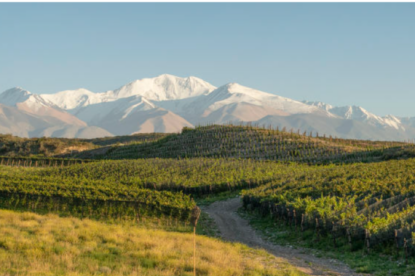Living a modern life of Amazon-convenience, it’s easy to forget wine’s long history and the complex journey it undertook to arrive bottled and ready-to-drink on retail shelves. Especially Germany’s superstar grape, Riesling. After all, the grape didn’t become “noble” overnight. It takes more than a few Instagram shots on a beach in Tulum to become queen of the white wines, right?

Riesling, wine, and alcohol go way back. Past the bell-bottomed seventies, before Queen Victoria reigned or Jesus Christ was born. In fact, alcoholic fermentation was familiar to Germanic Tribes. Before 50 BC, the ancient Teutons drank mead, a wine-like beverage made from fermented honey. It was during this era humans began experimenting with the cultivation of wild vines. The species found in Germany today, Vitis vinifera, developed from those early efforts. A great example of human curiosity driving advancement.
After 50 BC, wine gets interesting. It’s well known that Romans loved to drink. They dedicated a God to wine and a good time. But sipping fermented grape must from goblets wasn’t their invention. Through conquests north of the Alps, Romans discovered viticulture from the Greeks and Etruscans, then spread it to Germanic territories. In fact, Romans brought the first vine to the Mosel Valley. Evidence of their wine presses remains today. In testament to Roman good taste (at least in wine), many sites correspond to locations of today’s best vineyards.
By 330 AD, wine culture was flourishing. Enough for the first wine cellar in Germany, located in Trier, to be built. The renown of German wine started to spread – literally and figuratively. Romans transported wine on ships along the rivers, and the poet Decimius Magnus Ausonius wrote Mosella in which he gushed about Mosel’s steep vineyards.
Arguably, the first German wine connoisseur was emperor Charlemagne. A pivotal leader and ruler of the Frankish Empire, he was instrumental in spreading wine through Christianity. Viticulture was largely managed by monasteries, a trend carried out for centuries. Indeed, monks planted some of the best-known vineyards like Prälat.
In 1435, Riesling earns its first recorded mention, written as “Riesslingen.” In 1552, Hieronymus Bock, a German botanist and physician, helped modernize the study of plants and the spelling of Riesling. He contributed to the widely held belief that Riesling originated in the Rhine region.
In 1787, The Elector and Archbishop of Trier made a push for quality, decreeing all “bad” vines be replaced with Riesling. He was on to something; within seven years, his efforts resulted in one of the largest Riesling-growing areas in the world.
By the 1850s, Riesling’s popularity exploded, commanding higher prices than Bordeaux and Champagne. A century later would see the creation of the Deutsches Weininstitut (German Wine Institute), based near Mainz, to oversee the international marketing of German wines.
And finally: modern times. The mid-1990s proved a renaissance for the white grape. Quality and demand increased, and Riesling assumed the throne of German wines. With a market share of about 40%, Germany had developed the largest Riesling growing area in the world. To encourage young growers to carry the torch, Deutsches Weininstitut established the “Generation Riesling” organization. The 35-and-under members demonstrate skill, experience, and quality that represents the dynamic development in the German wine business.
And that is a mere snapshot of how this noble German grape, thousands of years later, landed on your dinner table.
Last Updated: May 5, 2023














